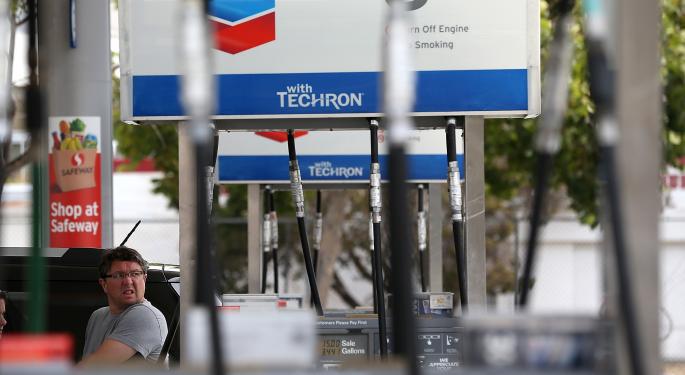Profit from the Best of Both Worlds with Chevron
In previous articles on this site, it was detailed how studies have shown that stocks with low betas and high dividends can turn out to be the most rewarding long term investments. Finding both features in one company that is also a "Dividend Aristocrat" makes for a very attractive equity.
With a below average beta and an above average dividend yield, Chevron Corporation (NYSE: CVX) should be an ideal long term holding.
A low beta reveals that the share price of a company moves less than the market as a whole. This is due to investors not selling, which is a sign of satisfaction in that equity. That is a bullish indicator that the shareholders of Chevron and other low beta stocks are positive about the future of the company.
Much of that positive outlook comes from the high institutional ownership of Chevron's: these investors, such as mutual funds and pension groups, tend to hold for the long term after researching an equity extensively before buying. In the major oil and gas sector, other low beta entities include Exxon Mobil (NYSE: XOM) and PetroChina (NYSE: PTR).
Along with a low beta, there are also many Big Oil firms with high dividend yields.
At present, the average dividend yield for a member of the Standard & Poor's 500 Index is around 1.9 percent. For Chevron, it is 3.39 percent. ExxonMobil, the biggest oil company in the world, pays a dividend of 2.74 percent. The dividend yield for PetroChina is 4.15 percent.
Making the dividend feature of Chevron Corporation even more appealing is that the company is a Dividend Aristocrat. To earn that moniker, a firm must increase its dividend annually for at least 25 consecutive years. By doing so, Chevron and other Dividend Aristocrats demonstrate a commitment to rewarding shareholders with a growing income stream. With a below-average payout ratio of 30.80 percent, Chevron has plenty of cash to increase the dividend and fund buyback programs to reward shareholders.
The high dividend, with a tradition of increasing annually, is most likely a major factor as to why shareholders do not sell Chevron, resulting in its beta being below average.
Due to a declining demand for oil Chevron is off in recent market action, as are others in the energy industry. Now trading around $117.40 a share, the mean analyst target price for Chevron over the next year is $132.60. For 2013, it has risen by around 12 percent; a nice jump but far below the S&P's soaring upwards more than 20 percent for the year.
But over the long haul, the combination of a low beta with a high yield and a history of annual dividend growth should make Chevron Corporation a very rewarding holding for investors.
© 2025 Benzinga.com. Benzinga does not provide investment advice. All rights reserved.
Posted-In: dividend aristocrats energyLong Ideas News Dividends Global Economics Trading Ideas Best of Benzinga



